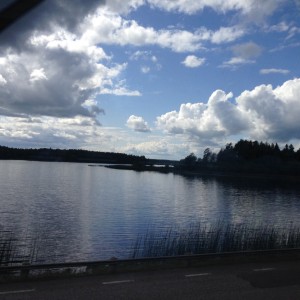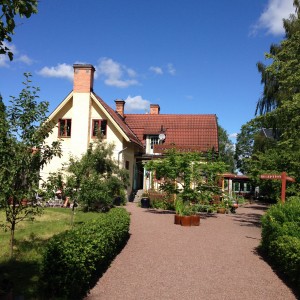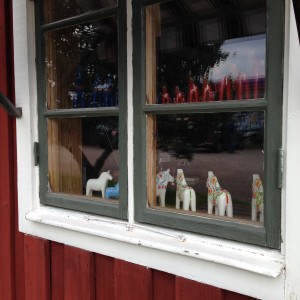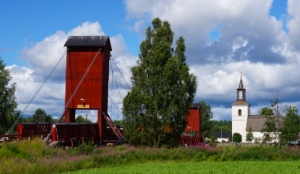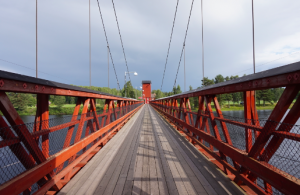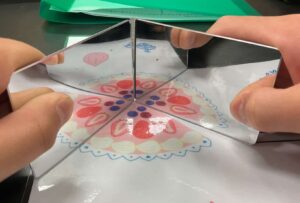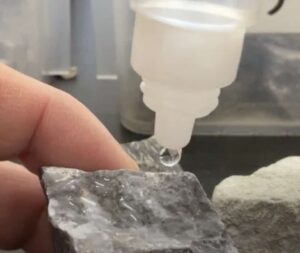Journey North from the Nobel Prize Lands: The Hidden Science of Sweden’s Rural Bridges
【This article is also available on the radio!】
When you talk about the strength and design of structures in class, what examples do you use? Probably familiar buildings, famous bridges, or diagrams from textbooks, right? But what if the structure you’re talking about is in a beautiful, picturesque landscape in a faraway country? That would surely stimulate students’ intellectual curiosity even more.
In 2015, I visited the venue in Stockholm where the Nobel Prize banquet is held. Filled with excitement, I extended my trip to the rustic Swedish countryside. In a previous blog post, I talked about the beauty of the “arch structure” I encountered during that trip, but this time I’d like to introduce another bridge with a “beautiful structure” that I found on that trip.
I am always captivated by the clever principles and wonderful forms of structures that fuse science and design. It was an immense joy for me as a science teacher to unexpectedly encounter such “scientific beauty” in a distant land. Now, let’s unravel the story of science that the bridge standing in the beautiful Nordic nature tells us.
A Hidden Gem in Dalarna: The Truss Bridge
The place I visited was the Dalarna region, about a two-hour train ride and a 30-minute bus ride from Sweden’s capital, Stockholm.
In contrast to Stockholm’s sophisticated atmosphere, Dalarna was a beautiful rural town that looked like it had jumped out of a picture book, with its distinctive red-roofed buildings. You may have seen the red carved wooden horse figurines called Dalarna horses, and this is their birthplace. Cute Dalarna horses were also displayed in the shop windows, which warmed my heart.
While there aren’t any specific tourist spots, I felt a sense of comfort by renting a bicycle at the inn and exploring the area at my leisure, as the unique relaxed pace of this place made me feel like I was in a different world. It had a certain nostalgia that felt similar to the Japanese countryside, almost making me forget I was in a foreign country.
During my stroll, what captivated me the most was a beautiful bridge, built in 1922, that could be called a symbol of Dalarna.
1. The Bridge from Afar
When I saw the bridge from afar, the first thing that caught my eye was its vibrant red color reflected in the clear, mirror-like water. The postcard-like scenery made me stop and stare.
2. The Aesthetics of the “Truss Structure” Revealed Up Close
As I got closer to the bridge, I was surprised by the meticulousness of its structure. Unlike the “arch structure” I introduced before, this bridge was made with a “truss structure.”
This is the bridge from afar
This is what it looked like up close.
A beautiful series of triangular structures.
A truss structure is a framework structure made by connecting and combining members into triangles. A triangle is a very stable shape that is resistant to deformation even when a force is applied from the outside. By taking advantage of this characteristic, it can maintain strength with fewer materials and withstand large loads, which is why it is used in various large-scale structures such as bridges, roofs, and towers.
On this bridge in Dalarna, thin members formed a continuous pattern of beautiful triangles, which appeared before my eyes like a work of art. The sight of the red truss structure and the clear river reflecting it could truly be called a “fusion of science and beauty.”
The Science of Truss Structures: Why Triangles?
When you introduce truss structures in your science class, try asking your students, “Why do bridges use so many triangles?”
- Force Distribution: Triangles can efficiently distribute the force applied to a vertex along its sides. For example, a quadrilateral can easily deform when force is applied, but if you add a line to the diagonal to divide it into triangles, it suddenly becomes stable.
- Compression and Tension: Each member of a truss structure is mainly subjected to two types of forces: “compressive force” and “tensile force.” Because complex bending forces are less likely to be applied, materials can be used efficiently.
This red bridge in Dalarna was truly a textbook example of a truss structure. Its simple yet mechanically rational design shows how sophisticated the technology was over 100 years ago.
By introducing the arch structure from the previous article and this truss structure while comparing their characteristics, strengths, and weaknesses, students will surely gain a deeper understanding of the fun of structures. Traveling to the countryside of a foreign country, you can find scientific discoveries in unexpected places, which is truly fun! Why don’t you also look at the structures around you and find the beauty of the science behind them?
Inquiries and Requests
I want to share the fun, wonder, and excitement of science with as many people as possible. I’ve put together fun science experiments that you can do at home and easy-to-understand tips for them. Please search for various things!
・About the operator, Ken Kuwako, click here
・For various requests (writing, lectures, science workshops, TV supervision, appearances, etc.), click here
・Article updates are distributed on X!
![]() The Scienceネタチャンネル is distributing experiment videos!
The Scienceネタチャンネル is distributing experiment videos!

